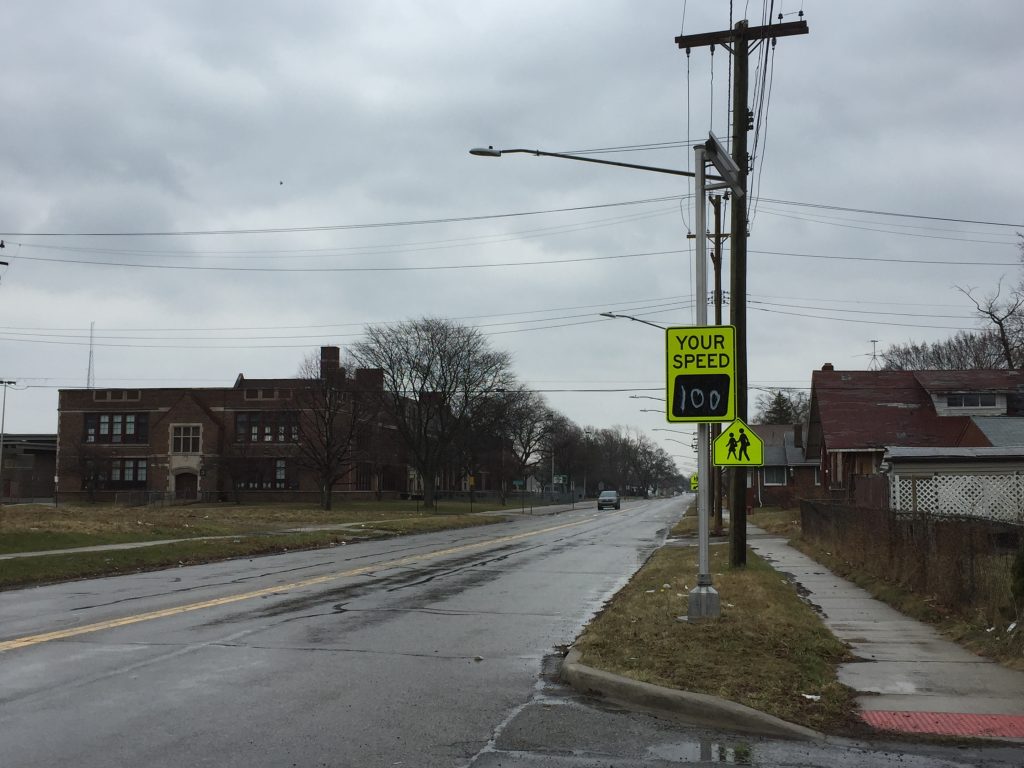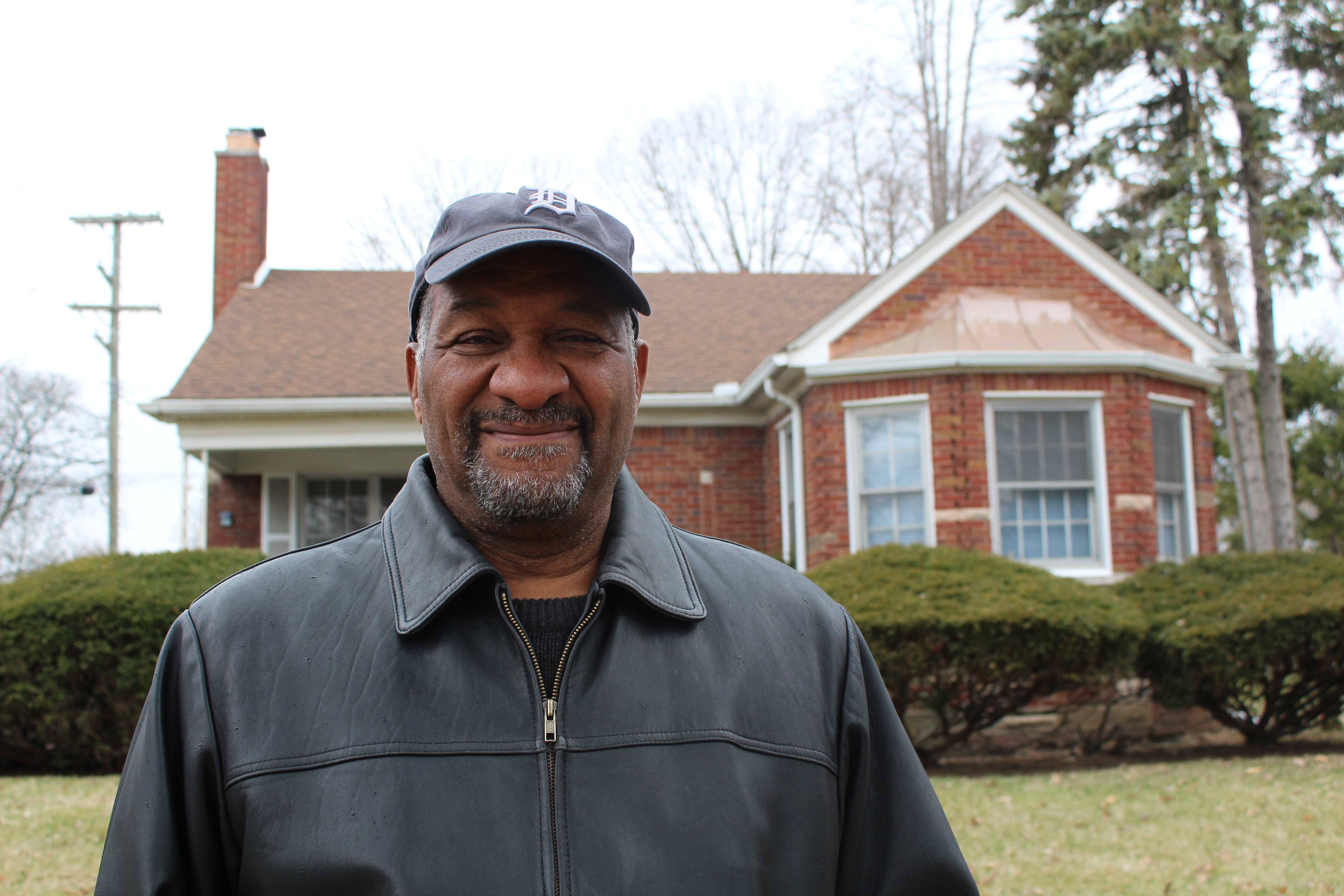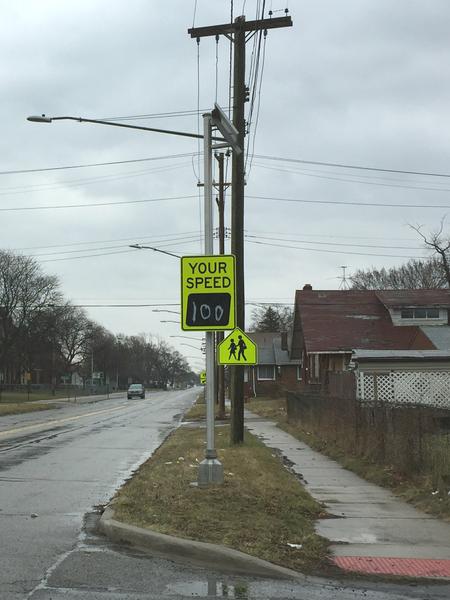What Would it Take to Get a Speed Bump in a Detroit Neighborhood?
This Detroiter ran into a dead end. And here’s why.


WDET Asks: What do you and your neighbors want in your community to make it better?
Detroiter Oliver Cole Answers: He wants drivers on his street to slow down.
So, speed bumps, maybe?
Slow Your Roll
It’s a drizzly, Saturday afternoon in the Grandmont #1 neighborhood, a northwest Detroit community that boasts a mix of well-maintained brick bungalows and colonials. Oliver Cole, the president of the Grandmont #1 Neighborhood Improvement Association, stands on his porch enjoying the peace and quiet. He says the street isn’t always so calm.
“Inside my home, the first thing is you either hear sound of a car racing down the street, or truck, or especially as it’s getting to be summertime, motorcycles,” Cole said. “You see them or you feel the vibration.”
The traffic, he said, is the worst on weekdays around 5 p.m. He wishes it would always be like this particular afternoon: quiet and safe.
“Summertime’s coming up. Kids are going to be out of school. I don’t want to see anyone’s child hit by a car,” Cole said.
To keep drivers from speeding down his street, Cole has publicly proposed putting in speed bumps. He said he’s brought the idea to city officials he’s met at community meetings. But his request always comes to a dead end.
“They would tell me, ‘this department’s responsible for it,’ or ‘this branch of government,'” he said. “Then they just kicked it up to, ‘Well, it’s something that the state of Michigan doesn’t allow.’”
What Do the Suburbs Say?
The idea that the state doesn’t allow speed bumps on residential streets may sound odd, but there is some evidence to support the claim.
Exhibit A: The city of Pontiac’s website, which says:

“Speed bumps have considerable potential for liability in Michigan and state courts have held public agencies liable for personal injury resulting from faulty design. As a result, Michigan has officially rejected them as a standard traffic control device on public streets.”
Exhibit B: A city of Livonia webpage that reads:
“Because speed bumps have considerable potential for liability suits, Michigan has officially rejected them as a standard traffic control device on public streets.”
Yet, cities like Ann Arbor and Lansing have criteria for implementing speed bumps or “speed humps,” a slightly more flattened version.
So Are Speed Bumps Outlawed in Michigan?
Several experts at traffic and infrastructure organizations, including the Michigan Department of Transportation, hadn’t heard of a policy that bans speed bumps in Michigan.
The Road Commission for Oakland County spokesman, Craig Bryson, hasn’t heard of one either.
“So as far as we know there’s no official law preventing us from using them,” he said. “But we don’t use them for a variety of reasons.”
One of those reasons is a fear of lawsuits.
“I can tell you that our attorneys cringe if you even mention the word speed bump,” Bryson said. “If somebody hits a speed bump and it damages their car, the concern is that the road agency would be liable for putting an obstacle in the road the vehicle hit.”
Bryson added that speed bumps could also damage snow plows and obstruct emergency vehicles.
Back in Detroit
Janet Attarian, the deputy director at the City of Detroit Planning and Development Department, confirms what resident Oliver Cole was told at meetings: Speed bumps are not currently being considered for Detroit streets.
But Attarian said it’s not because speed bumps are banned in Michigan.
“I hadn’t heard specifically that that was the reason,” Attarian said.
Attarian added Detroit is not putting them in right now because the city wants to establish a clear process for determining when and where such traffic slowing devices are installed. And she said her department also needs to determine which mechanisms they actually want to make available.
“One of the advantages of speed bumps is they’re relatively affordable, compared to some other methods,” she said. “But they do have some downsides and I think the question on the table is, ‘Do we want to make them one of the tools in the toolbox?’ or are we just not comfortable, yet, adding them?”
Compromise: Bump Outs?

Attarian says another tool they’re considering is something called a “bump out.” This method extends the curb out into the parking lane at crosswalks.
“It makes pedestrians more visible to drivers and drivers much more visible to pedestrians. It shortens the crossing distance. It helps reduce speed too,” Attarian said.
Resident Oliver Cole says he can see how a bump out would slow traffic.
“That could work because if you’re driving down the freeway and you go through a construction zone, and they have the narrow part with the cement, people slow down because they just get nervous,” Cole said.
If speed bumps don’t make the cut, getting a bump out could be a good compromise on his block, Cole said.
Attarian did not say when her department would be releasing any kind of traffic-calming program. In the meantime, she recommends that residents like Cole ask for more police enforcement for speeding in their neighborhoods.
Cole realized he may have another tool more immediately at his disposal.
“Someone asked me, as a neighborhood president, how come I don’t ask them to fix the roads?” Cole said.
“I say ‘Well if they fix the potholes, that’ll make the roads even smoother.’ People will not slow down. They have to slow down for the potholes.”
Cole jokes:
“Michigan doesn’t have to enact a speed bump law because they already have a default one.”
Although it’s unclear whether speed bumps are a tool Michiganders can use to slow traffic in their neighborhoods, there’s no question that potholes are far from being eliminated.
